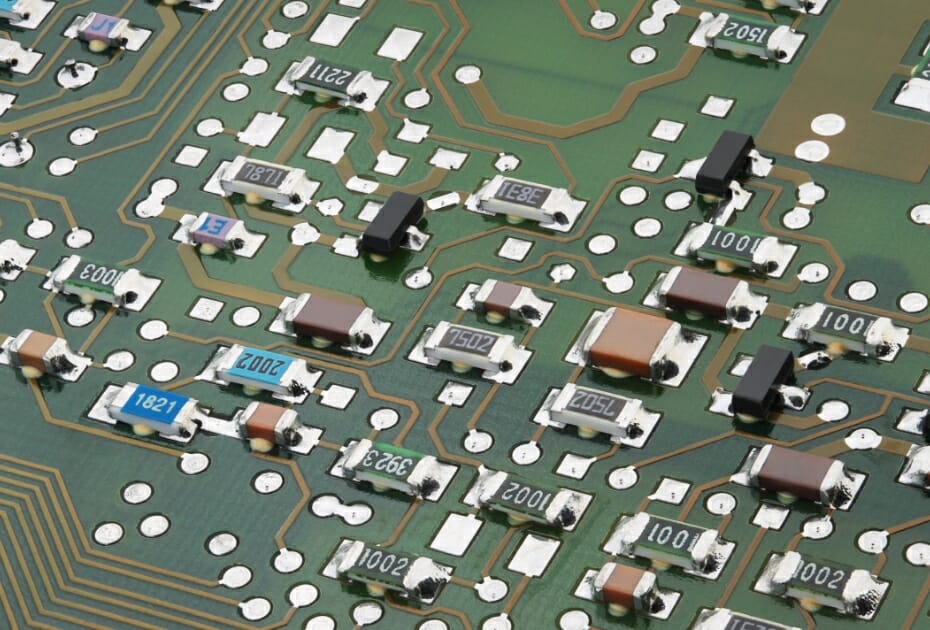

Getting to Know the Basics of Passive Components
Learning about components and what they do is one of the key skills to hone when becoming an engineer. A passive component is an electronic component that receives energy, which it will either absorb, dissipate, or store in a magnetic or electric field. As the name suggests, a passive component cannot amplify, generate an electrical signal, or oscillate. A passive component needs no electricity to operate which is why it has the “passive” designation.
The following four examples are the most common passive components:
- Capacitors
- Inductors
- Resistors
- Transformers
- Diodes
Capacitors
A capacitor stores energy when it is electrified in an electric field between a pair of conductors which are called plates. The ability of a capacitor to store charge is measured by its capacitance. Capacitors are used in items like fans, air compressors, refrigerators and lighting.
Inductors
Another example of a passive component is an inductor (also known as a coil, reactor or choke), which stores energy as a magnetic field and can also deliver energy to a circuit; however, this is not done on a continuous basis. Inductors are typically used as devices that store energy and come in several different types.
Resistors
A resistor is a passive two-terminal component. It is designed to resist the flow of electrical current, therefore, impeding it. It can only receive energy, which it then dissipates as heat as long as it has a continuous flow of current. It can also adjust signal levels, divide voltages, and terminate transmission lines. Resistors are used in common everyday products such as electric heaters, toasters and electric ovens.
Transformers
Although a transformer is used to raise voltage levels, it is still technically a passive electronic component. When a transformer steps up or steps down the voltage, the energy and power remain the same on the primary and secondary side. Transformers are most often used in power stations, small appliances, lighting systems and renewable energy applications.
Diodes
Diodes are extremely small components that are used to direct the flow of energy within the boundaries of a circuit. Diodes are mainly used for isolating signals from a supply, mixing signals, and turning AC to DC.
Main Differences Between an Active and a Passive Component
There are a few main differences between an active and a passive component. An active component is an electrical component that supplies energy to a circuit rather than receiving it. Some of the most common examples of active components include current sources, voltage sources, generators and bipolar junction transistors.
The first difference is that active components require an extra source of energy to perform their function whereas passive components do not.
The second main difference is that active components produce energy in the form of current or voltage whereas passive components are meant to direct, store or dissipate energy. Generators and sources of voltage are a couple examples of active components that would provide energy to a passive component.
Linearity is another area in which passive and active components differ. Passive components are linear whereas active components are non-linear.
Regarding power gain, passive components are unable to provide any sort of amplification or additional power that is not already present. By comparison, active components are capable of providing power gain.
The ability to control current is another big differentiator between active and passive components. Active components are able to easily control the flow of current whereas passive components cannot.
Power Inductors by ECS Inc.
The power inductors manufactured by ECS Inc. are two-terminal passive electronics that are used to achieve cleaner output when using high frequency switching power supplies. What makes inductors distinct is that they offer low magnetic radiation for low noise environments by compiling energy in the form of a magnetic field. ECS Inc. offers a wide array of small form factor shield power inductors in a variety of sizes, inductance ranges and operating temperatures meant to suit several applications, which include:
- Automotive
- Telecommunications
- Medical
- Industrial
- Consumer electronics
How to Purchase ECS Inc. Timing Solutions and Products
At ECS Inc. we provide some of the most advanced timing solutions and passive components that are available in the industry. That includes quartz-based crystal products, oscillators (AEC-Q200, surface mount, thru hole), resonators, filters, power inductors, and real time clocks (RTC).
We’ve made locating ECS Inc. products easy by allowing our customers to search for them in two ways. Customers can either search using the ECS International part number, or they can use the parametric search function on our website, which allows the user to filter down ECS Inc. stock of timing solutions by series, type, frequency, operating temperature, and other attributes.
ECS Inc. products are delivered through a supply chain network of strategically located global subsidiary offices in key locations throughout the country.
The best way to inquire about our timing solutions is by contacting our engineering team at engineering@ecsxtal.com. They will be able to answer all your questions about ECS Inc. products. You can also find a representative in your vicinity using our interactive map.
Learning About Passive Components and How They’re Used was last modified: February 14th, 2023 by